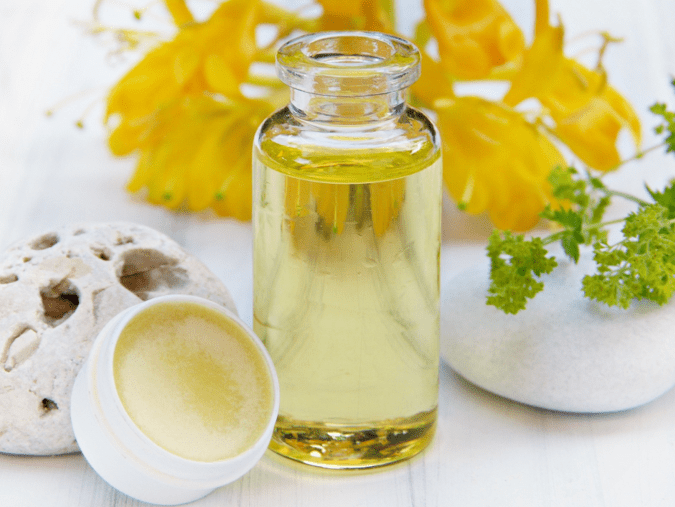Essential oils are extracted and distilled from various plants, and they are loaded with chemical compounds that support the plant’s life cycle. They are all-natural substances that often have some very powerful abilities and can be especially adept at fighting a number of different pathogens that might be detrimental to your health.
Since many essential oils are either antimicrobial or antifungal, they are capable of combating fungus and bacteria, and they don’t carry any of the undesirable side effects of other treatments. That is one of the main reasons that antifungal essential oils have become so popular in recent years, with their ability to fight such issues as ringworm and athlete’s foot, with no unpleasant side effects.
Antifungal essential oils treating fungi
The properties that essential oils have to fall into the categories of fungicidal, astringent, anti-inflammatory, and antifungal. Some essential oils are even capable of triggering new cell growth. At any rate, the properties in these essential oils work together to deliver effective treatment for fungal infections that can appear anywhere on your skin. Here are some of the most common fungal infections that you might be bothered with and how antifungal essential oils will help you to overcome them:
- Toenail fungus – this fungal infection affects as much as one-fifth of the entire population in this country. This kind of fungal infection can be extremely difficult to get rid of, and it will cause your toenails to become discolored or yellowish, sometimes exhibiting spots or streaks in the toenails.
- Jock itch – this condition is triggered by a fungus that spreads from one individual to another, and which typically grows in the warm areas of your body that are subject to more sweating. Most often, these areas are tucked away under your clothes, in the areas around your buttocks, or your genitals.
- Ringworm – this is an itchy, contagious skin condition that could be triggered by a number of different fungi. It can appear on many different parts of the body, including your scalp.
- Tinea versicolor – this is a fungal infection causing a number of discolored patches that you might observe on your skin. Hormonal changes or having excessively oily skin are two of the biggest risk factors for this type of fungus.
- Athlete’s foot – this is a specific type of ringworm that is generally found on a person’s feet. Athletes’ feet got their name from a number of people who spend time wearing warm, damp socks following athletic activities that generate a significant amount of sweat.
Active compounds in antifungal essential oils
Many essential oils are composed of natural antimicrobial and antibacterial compounds, and these are the compounds that enable essential oils to combat fungi. The specific compound will, of course, depend on which essential oil you’re talking about, but two of the most common are phenols and aldehydes. Phenols act very much like antioxidants and have considerable antibacterial properties. Aldehydes are disinfectants that have the ability to kill fungi and sterilize viruses and bacteria.
These compounds are so effective at destroying pathogens that a number of scientists have come to believe that essential oils might be an excellent response to the growth of some types of bacteria, even those which have recently developed resistance to antibiotics. Here are some of the most common essential oils with their active compounds:
- Lemongrass oil – this is an essential oil that has a number of antibacterial properties and is particularly effective against bacillus cereus and bacillus subtilis. It is sometimes used to create antimicrobial drugs that are then designated for the treatment of bacterial infections. Lemongrass oil can be used as an air freshener around the home, and it can also be inhaled to bring on a relaxed state of being. In some cases, it can also be used as a topical that’s applied to your skin to clear up a bacterial infection.
- Eucalyptus oil – this has been shown to be very effective at reducing inflammation, relieving dandruff, reducing stress levels, and relieving some of the symptoms associated with asthma. Oil from this plant is very effective at inhibiting the growth of bacteria, and that makes it an excellent choice for use as a natural antibiotic when treating several different infectious diseases.
- Tea tree oil – this is sometimes referred to as melaleuca oil, and it comes from the leaves located on a tea tree. It has a number of antiviral properties, in addition to also having some distinct antifungal capabilities. That’s why it is frequently used to treat a number of different skin conditions such as dandruff, nail fungus, and acne. It is also sometimes used to combat pneumonia, skin infections, food poisoning, blood infections, and stomach viruses. It has been shown to be effective in some cases against acne vulgaris as well, with a 5% solution of tea tree oil being used for up to eight weeks to improve acne vulgaris. When used as a topical, it should be applied once or twice daily, or it can be used in warm bath water or in a diffuser that allows you to inhale it. Tea tree oil should not be ingested, but it can be used as a household disinfectant when you’re trying to clean an area of the household and kill off germs.
Sources
- https://www.healthline.com/health/antifungal-essential-oils





























